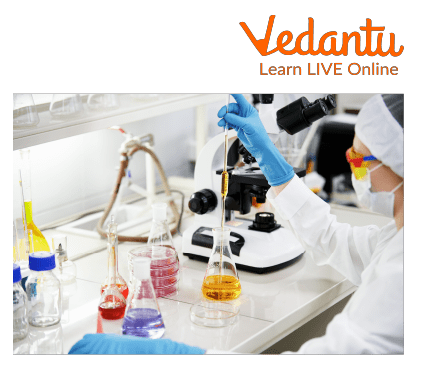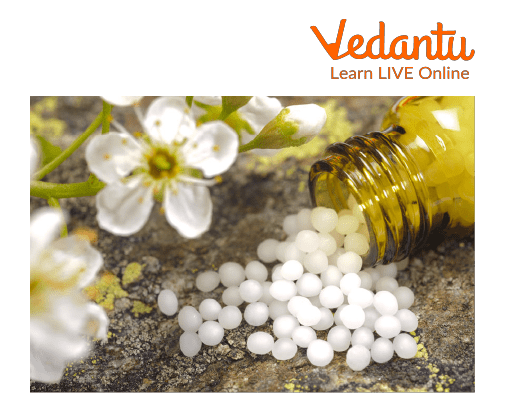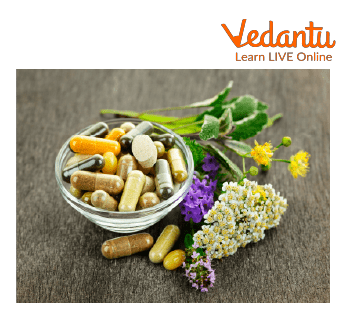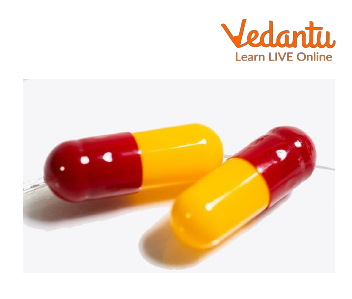




Introduction
Whenever we become ill from a disease, we visit a doctor for a checkup, and the doctor prescribes our medicines. Medicines are drugs that cure illnesses. Have you ever wondered how these medicines are made? Some medicine is made from plant leaves and bark, such as neem leaf extract, which is a sedative and can cure analgesics, epilepsy, and hypertension; and tulsi or basil leaves, which can cure coughs, colds, bronchitis, and loss of appetite. In this article, we will see how modern medicine is made.
How Medicine is Made:
Chemicals are used for making medicines. There is no common source for the medicine. They can originate from a variety of sources, including plants, animals, and scientific experiments. Medicines are made in the lab by mixing chemicals together. Fungus is also the source of certain types of medicines. Medicines are used to cure disease. Medicines are of different types. Some medicines can be taken orally like pills, some medicines are injected into the body with the help of an injection, liquid medicines can be swallowed, creams and gels can be applied to the skin, and some medicines can be inhaled like inhalers. Medicines are made through proper testing. Testing comprises two phases. In the first phase, laboratory experiments are done, and in the second phase, clinical trials of drugs are done.

Medicine Making
How is Homoeopathic Medicine Made:
It is an ancient medical science. But the theory of homoeopathy believes that the body can cure itself with some natural medicines. So homoeopathic doctors use small amounts of natural substances like plant and animal minerals as medicine. According to homoeopathic science, something that causes symptoms can be used to treat illness. For example, whenever we cut an onion, our eyes start watering, so according to homoeopathy, onions can treat allergies. Now, homoeopathic medicines are natural sources that can be made by adding water and alcohol, due to which the reactivity of the ingredients decreases slightly. This process is called potentization.

Homoeopathic Medicine
How is Medicine made from Plants:
We usually see in our homes that whenever we get a cough or cold, we are given the advice to drink ginger, tulsi, and clove tea because these plants have properties to treat coughs and colds and contain bioactive compounds. Bioactive compounds can cure disease. Plants are used to make medicines through the process of insolation. Plants are ground in this process. After adding liquids, the mixture was filtered to separate soluble and insoluble compounds. Another method is distillation, in which plants are heated up to a boiling point, and after complete heating, unwanted compounds are separated from the plants. Caffeine is found in coffee and is used to treat fatigue and migraines. Many medicines contain caffeine. Aspirin is a medicine that is used to relieve pain. It is found in willow bark. There are many more medicines that are directly obtained from plants.

Medicine From Plants
How is Medicine Capsule Cover Made:
Storing medicine in a capsule is called encapsulation. Capsules may be hard-shelled or soft-shelled. Gelatin is used to make the capsule. Gelatin is made from the skin and bones of cows and pigs. Skin and bones are boiled until a gel-like substance is formed, and this substance is used for the making of the capsule cover. Some capsules are made of cellulose from pine trees; they are called vegetarian capsules. As vegetation capsules are natural, they don’t have any side effects.

Medicine Capsule Cover
How Modern Medicine is Made:
Modern medicine is mostly made through chemical processes. The study of modern medicine is called pharmacology. Any modern medicine is made available to the public only after thorough research and investigation. Many researchers, like chemists, biologists, and physicians, work together to form a medicine. Chemistry's work is to discover molecules, which are then investigated by biologists and prescribed to patients by physicians. Chemistry is very important for making medicines because chemistry is the study of chemicals, and without chemistry, modern medicine cannot be made.
Solved Questions:
Q1. What is medicine?
Ans: Medicine is a drug that is used to cure diseases.
Q2. what is homoeopathy?
Ans: Homoeopathy is an alternative medicine. Homoeopaths say the body can cure itself of disease with certain natural medicines.
Q3. What is gelatin?
Ans: Gelatin is a protein made from animal bones and skin.
Summary:
In this article, we learned about medicines. So medicines are of different types; some are homoeopathic. By homoeopathic medicine, we mean medicines that are made naturally. The science of homoeopathy works on the simple theory that "like cures like." According to this theory, the body can cure itself. For example, onions make our eyes watery, so they are used to treat certain types of allergies, but the scope of homoeopathy is limited. Homoeopathy cannot treat life-threatening diseases like modern medicine can. Modern medicine is made up of chemicals. These chemicals can occur naturally or be made in laboratories. After properly searching, modern medicine comes into use. The capsule covers are made of gelatin; some are made of cellulose or pine; they are called vegetarian capsules.
FAQs on How is Medicine Made
1. What are the main sources used to make medicines?
Medicines are created from several primary sources. These include:
- Plants: Many medicines originate from the leaves, roots, bark, or flowers of plants, such as quinine from the cinchona tree.
- Animals: Some medicines, like certain types of insulin and vaccines, are derived from animal sources.
- Minerals and Chemicals: Modern medicines are often synthesised in laboratories by combining different chemicals to create effective compounds.
- Microorganisms: Fungi and bacteria are crucial sources for antibiotics, with penicillin being a famous example derived from a fungus.
2. How are medicines typically made from plants?
Making medicine from plants involves a careful process. First, the correct part of the plant (like the leaf, root, or flower) is identified and harvested. This part is then cleaned, dried, and often ground into a fine powder. The crucial step is extracting the active ingredient—the specific substance that has a medicinal effect. This extract is then purified and formulated into a usable form, such as a tablet, oil, or cream.
3. What is the difference between traditional medicine and modern allopathic medicine?
The key difference lies in their approach and development. Traditional medicine, like Ayurveda or traditional Chinese medicine, primarily uses natural sources like herbs and relies on knowledge passed down through generations. Modern allopathic medicine is based on scientific research, where compounds are often chemically synthesized and must pass rigorous clinical trials for safety and effectiveness before being approved for use.
4. What are the basic steps for creating a new medicine in a laboratory?
The journey of a new medicine from the lab to the pharmacy is a long one, involving several key stages:
- Discovery and Research: Scientists identify a disease and search for a chemical compound (an active ingredient) that might treat it.
- Pre-clinical Testing: The compound is tested in labs and on animals to check for safety and effectiveness.
- Clinical Trials: The medicine is tested on human volunteers in multiple phases to confirm its benefits and identify side effects.
- Manufacturing and Formulation: Once approved, the active ingredient is manufactured on a large scale and mixed with other substances to create the final form, like a tablet, syrup, or injection.
5. Why is it important to only take medicine prescribed by a doctor?
Taking medicine without a doctor's advice can be very dangerous. A doctor determines the correct medicine for your specific illness, prescribes the right dosage (amount), and understands potential side effects or allergies you might have. Self-medicating can lead to the illness getting worse, harmful side effects, or developing resistance to important drugs like antibiotics.
6. How are liquid medicines like syrups made differently from solid tablets?
The manufacturing process depends on the final form of the medicine. For tablets, the active medicinal powder is mixed with binding agents and compressed under high pressure into a solid shape. For syrups, the active ingredient is dissolved or suspended in a liquid base, which often includes sugar, water, and flavouring agents to make it palatable and easy to swallow, especially for children.
7. How did people make medicines long ago, before modern factories existed?
In ancient times, people relied entirely on nature and traditional knowledge. They would identify medicinal plants and prepare remedies by hand. Common methods included:
- Grinding herbs into a paste using a stone grinder to apply on wounds.
- Boiling roots and leaves to create a concentrated liquid or decoction (kadha) to drink.
- Drying and storing herbs for use during different seasons.
8. What are the empty shells of medicine capsules made from?
The outer covering of a medicine capsule is designed to be easily digestible. It is most commonly made from gelatin, which is a protein derived from animal sources. For those who prefer non-animal products, vegetarian capsules are also widely available, which are typically made from plant-based substances like cellulose.
9. Can we make our own medicine at home using plants from a garden?
While simple home remedies using plants like tulsi for a cough are common, it is not safe to try and make strong medicine at home. Many plants can be poisonous if used incorrectly or in the wrong amount. Identifying, extracting, and dosing medicinal compounds requires expert knowledge. For any serious illness, one must always consult a qualified doctor.
10. What is the difference between a medicine that cures a disease and one that only relieves symptoms?
Medicines work in different ways. A curative medicine, like an antibiotic, attacks the root cause of the problem (e.g., it kills the bacteria causing an infection). A symptomatic medicine, like a painkiller for a headache or fever, does not cure the underlying illness but provides relief from the symptoms, making you feel more comfortable while your body fights the infection.









